The Comet Interceptor Mission
- PMID: 38282745
- PMCID: PMC10808369
- DOI: 10.1007/s11214-023-01035-0
The Comet Interceptor Mission
Abstract
Here we describe the novel, multi-point Comet Interceptor mission. It is dedicated to the exploration of a little-processed long-period comet, possibly entering the inner Solar System for the first time, or to encounter an interstellar object originating at another star. The objectives of the mission are to address the following questions: What are the surface composition, shape, morphology, and structure of the target object? What is the composition of the gas and dust in the coma, its connection to the nucleus, and the nature of its interaction with the solar wind? The mission was proposed to the European Space Agency in 2018, and formally adopted by the agency in June 2022, for launch in 2029 together with the Ariel mission. Comet Interceptor will take advantage of the opportunity presented by ESA's F-Class call for fast, flexible, low-cost missions to which it was proposed. The call required a launch to a halo orbit around the Sun-Earth L2 point. The mission can take advantage of this placement to wait for the discovery of a suitable comet reachable with its minimum V capability of . Comet Interceptor will be unique in encountering and studying, at a nominal closest approach distance of 1000 km, a comet that represents a near-pristine sample of material from the formation of the Solar System. It will also add a capability that no previous cometary mission has had, which is to deploy two sub-probes - B1, provided by the Japanese space agency, JAXA, and B2 - that will follow different trajectories through the coma. While the main probe passes at a nominal 1000 km distance, probes B1 and B2 will follow different chords through the coma at distances of 850 km and 400 km, respectively. The result will be unique, simultaneous, spatially resolved information of the 3-dimensional properties of the target comet and its interaction with the space environment. We present the mission's science background leading to these objectives, as well as an overview of the scientific instruments, mission design, and schedule.
Keywords: Comets; Instruments – spaceborne and space research; Spacecraft.
© The Author(s) 2024.
Conflict of interest statement
Competing InterestsThe authors declare no competing interests.
Figures





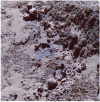






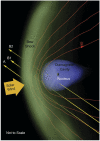
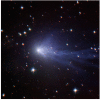



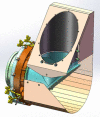












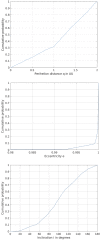

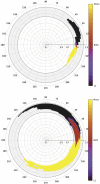
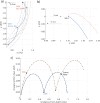








References
-
- Adams FC. The birth environment of the solar system. Annu Rev Astron Astrophys. 2010;48:47–85. doi: 10.1146/annurev-astro-081309-130830. - DOI
-
- A’Hearn MF, Millis RC, Schleicher DO, Osip DJ, Birch PV. The ensemble properties of comets: results from narrowband photometry of 85 comets, 1976-1992. Icarus. 1995;118(2):223–270. doi: 10.1006/icar.1995.1190. - DOI
-
- A’Hearn MF, Belton MJS, Delamere WA, Kissel J, Klaasen KP, McFadden LA, Meech KJ, Melosh HJ, Schultz PH, Sunshine JM, Thomas PC, Veverka J, Yeomans DK, Baca MW, Busko I, Crockett CJ, Collins SM, Desnoyer M, Eberhardy CA, Ernst CM, Farnham TL, Feaga L, Groussin O, Hampton D, Ipatov SI, Li JY, Lindler D, Lisse CM, Mastrodemos N, Owen WM, Richardson JE, Wellnitz DD, White RL. Deep impact: excavating comet Tempel 1. Science. 2005;310(5746):258–264. doi: 10.1126/science.1118923. - DOI - PubMed
-
- A’Hearn MF, Belton MJS, Delamere WA, Feaga LM, Hampton D, Kissel J, Klaasen KP, McFadden LA, Meech KJ, Melosh HJ, Schultz PH, Sunshine JM, Thomas PC, Veverka J, Wellnitz DD, Yeomans DK, Besse S, Bodewits D, Bowling TJ, Carcich BT, Collins SM, Farnham TL, Groussin O, Hermalyn B, Kelley MS, Kelley MS, Li JY, Lindler DJ, Lisse CM, McLaughlin SA, Merlin F, Protopapa S, Richardson JE, Williams JL. EPOXI at comet Hartley 2. Science. 2011;332(6036):1396. doi: 10.1126/science.1204054. - DOI - PubMed
-
- Alfven H. On the theory of comet tails. Tellus. 1957;9:92. doi: 10.3402/tellusa.v9i1.9064. - DOI
Publication types
Grants and funding
LinkOut - more resources
Full Text Sources
Miscellaneous
